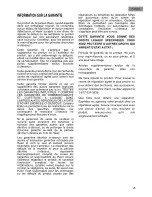
MultiScree
∂
Channel
Glossary
Button
An on-screen control that may be clicked with the mouse to perform a
function. See
page 21, Using On Screen Controls
.
Checkbox
A special button that allows an option to be switched on or off, as indicated
by a tick or cross.
Clock
A screen can contain a clock, either analogue or digital, showing the current
time. A clock cannot be used on a screen that contains text or a scroller.
Default
Each time a screen is created, various settings such as the transition,
background colour, display time, etc. will already be preset. These are
called the
default
settings
Delete
Permanently remove a screen, graphic, sound, or graphic category from the
Production Unit's hard disk. Once deleted, recovery is not possible. Use this
function with extreme caution.
Display Mode
Whilst in
Display Mode
, the Production Unit will cycle through a sequence
of different screens.
Editing Mode
Used to create and alter screens and sequences, schedule sequences, adjust
the time and date, and change the Production Unit's settings.
Elements
A screen is composed of a number of
elements
. Screen elements include
graphics, text, sounds, clocks, scrollers, transitions and background colours.
End-marker
This screen will always remain at the end of the sequence, and is used to
add new screens. The
End-marker
screen is never displayed in Display
Mode.
Font
A font defines the style in which text is shown. For example, this paragraph
uses the Times font. Other fonts include
Verdana
,
Forte
and
Eurostile
.
Function Keys
The row of special keys along the top of the keyboard. These keys perform
special functions in editing mode, as described in the
Key Command
Summary, page 187
Graphic
A static picture that will be displayed as the background of a screen.
Clocks, Text, Scrollers etc. will be displayed in front of this graphic.
190






































